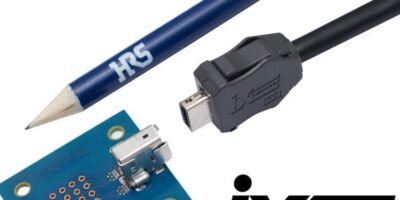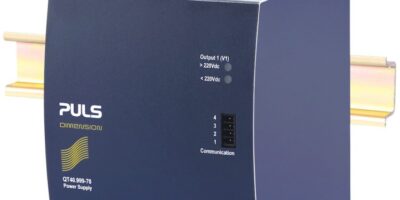Installation space can be reduced by up to 75 per cent, using the Hirose ix Industrial I/O connectors, now available from RS Components.
Manufactured by Hirose Electric, the ix Industrial series is designed for space-constrained applications and can support I/O signal transmission speeds of up to 10 Gigabits per second.
The ix Industrial series is suitable for a range of industrial applications including factory automation controllers, industrial robotics, servo amplifiers, PLCs and security systems. In addition to reducing installation space, compared with RJ45 based solutions, the Hirose connector supports CAT5e (1Gbit per second) and CAT6A (10Gbits per second) cabling and features a rugged EMI and ESD shielding design.
Other features include availability with two keying codes for Ethernet and non-Ethernet applications and compliance with the IEC PAS 61076-3-124 standard. Electrical characteristics are a current rating of 1.5A for all 10 contacts, with 3A capability on pins one, two, six and seven, voltage rating of 50V, 5000 mating cycles; and an operating temperature of from –40 up to +85 degrees C.
The connector receptacle can be mounted in parallel with a pitch distance of only 10mm, which enables close side-by-side positioning of multiple connectors on a single PCB. The receptacle shell is PCB-mounted via through-hole solder legs to enhance PCB retention, and the wire-termination unit and cable clamp are integrated into a single plug shell.
The snap-in I/O plug connector offers a positive metal lock, which provides a clear tactile click to ensure secure mating.
The Hirose ix Industrial connector series is now shipping from RS in the EMEA region.
RS Components offers more than 500,000 industrial and electronics products, sourced from over 2,500 leading suppliers, and provides a range of value-added services to over one million customers. It has operations in 32 countries and ships more than 50,000 parcels a day.







